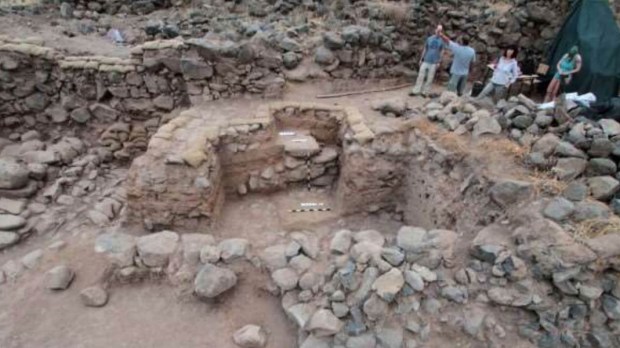Israeli authorities report that during excavations in the Golan Heights, Southern Syria, experts found the remains of a brick gate that was once part of the ancient city of Zer, better known in the New Testament as Bethsaida. It was in Bethsaida that Jesus cured a man of blindness before instructing him not to return to the city, and where he fed 5,000 from just five loaves of bread and two fish.
Lead archaeologist Dr. Rami Arav of the University of Nebraska began digs at two sites in the Bethsaida Valley after working at the site of Et-Tell for the last 30 years. At one site, they unearthed the remains of a brick wall, which Arav told the Jerusalem Post he believes to be the defensive wall of Zer:
“There are not many gates in this country from this period. Bethsaida was the name of the city during the Second Temple period, but during the First Temple period it was the city of Zer,” Arav said, pointing to Joshua 19:35, which says: “The fortified towns were Ziddim, Zer, Hammath, Rakkath, Kinnereth.”
Ancient-Origins reports that the wall has been provisionally dated between 1000 and 550 BC, which puts it in the time-frame of Zer. Further evidence of the location’s identity comes from the large area that the wall encompasses; Zer was described as a thriving urban settlement in the Bible.
Local authorities were pleased by the find and hope that it might bolster tourism. As with any site where Jesus performed a miracle, it is an important Christian landmark, the further study of which may lead to a better understanding of biblical-era city fortifications. The site is also significant to the history of early Israel, as this shows that one of the largest cities in the region was Jewish.
It is expected that more digs of the area will commence soon.

